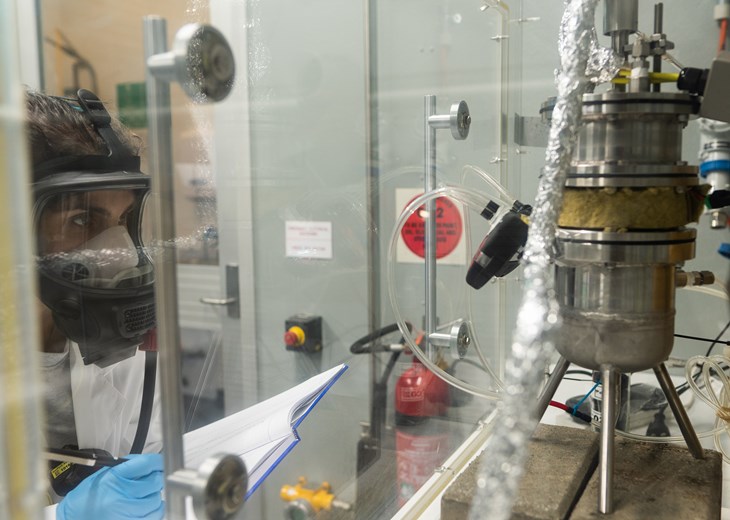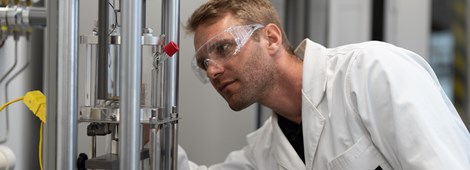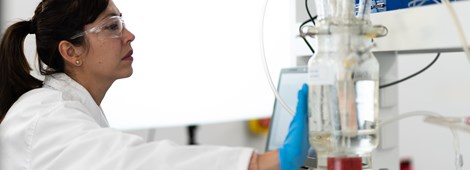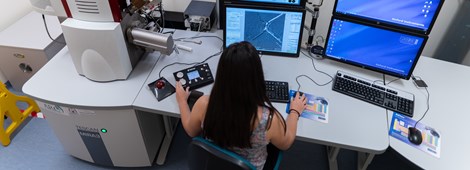EXTREME Laboratory

Overview
The Curtin Corrosion Centre has developed and commissioned the first laboratory capable of handling high-pressure pure hydrogen sulfide (H2S) gas as well as any carbon dioxide (CO2) and H2S mixture in Australia. Additionally, the new facilities allow us to conduct research using pure hydrogen gas at atmospheric pressure.
The so-called EXTREME Laboratory was designed to address the demand for materials testing and research in sour environments, paramount for the development of oil and gas production equipment, pipelines, and refinery infrastructure. The EXTREME Laboratory also enables hydrogen embrittlement tests and microbiologically induced corrosion (MIC) research in hydrogen gas atmospheres, opening the doors to innovative research in Western Australia as well as to national and international cooperations.
The Extreme Laboratory is unique in Australia and one of the few of its kind in the world!
Extreme conditions
The Extreme Laboratory has been pressure rated to:
| Condition | Maximum Test Pressure (bar) | Temperature range (°C) |
| Hydrogen sulfide (H2S) | 40 | 1 to 350 |
| Carbon dioxide (CO2) | 130 | 1 to 350 |
| CO2 + H2S mixtures | 130 | 1 to 350 |
| Hydrogen (H2) | 1 | 1 to 25 |
Advanced corrosion research
The EXTREME Laboratory is equipped with immersion autoclaves, modern potentiostats/ galvanostats, and standard and custom electrochemical cells. Thus, we can conduct a plethora of corrosion and electrochemical evaluations such as:
- High-pressure high-temperature (HPHT) immersion testing,
- Anodic and cathodic polarisation testing,
- Electrochemical impedance spectroscopy,
- Zero resistance amperometry (ZRA) and Electrochemical noise analysis,
- Pitting and crevice corrosion testing,
- Corrosion inhibitor testing,
- Jet impingement testing, and more.
Depending on the test environment, the maximum operating pressure and temperature of our autoclaves are 130 bar and 350 °C, respectively.
Environmentally-assisted cracking research
All the Environmentally-Assisted Cracking (EAC) test methods and modification thereof (e.g., stress corrosion cracking, sulfide stress cracking, hydrogen stress cracking, galvanically-induced hydrogen stress cracking, etc) can also be performed under HPHT conditions in the EXTREME Laboratory. Examples include:
- Four point bending, C-ring, and U-bend immersion testing.
- Proof-ring testing.
- Slow strain rate testing and fracture-mechanics based evaluations.
- Hydrogen permeation.
High-pressure high-temperature electrochemistry
The Curtin Corrosion Centre is currently negotiating the acquisition of a high-pressure and high-temperature electrochemical autoclave that will further expand our unique capabilities. The UNS N06022 (Hastelloy C-22) autoclave will be rated up to 350 bar and 350 °C.
The autoclave will be commissioned in Q1 2020.

Specialised research
The unique capabilities of the EXTREME Laboratory enable research in areas other than corrosion and materials. For example, the Curtin Corrosion Centre has conducted an investigation aimed at evaluating the performance of H2S scavengers in simulated process conditions. Our researchers have designed a custom reactor that mimics service flow and temperature conditions at a small scale.
The EXTREME Laboratory facilities offer new and exciting opportunities for scholars and engineers across Australia to conduct investigations that would previously require international cooperation. In this regard, we are working closely with the University of Western Australia on research aimed at elucidating the influence of H2S in hydrate formation mechanisms.



